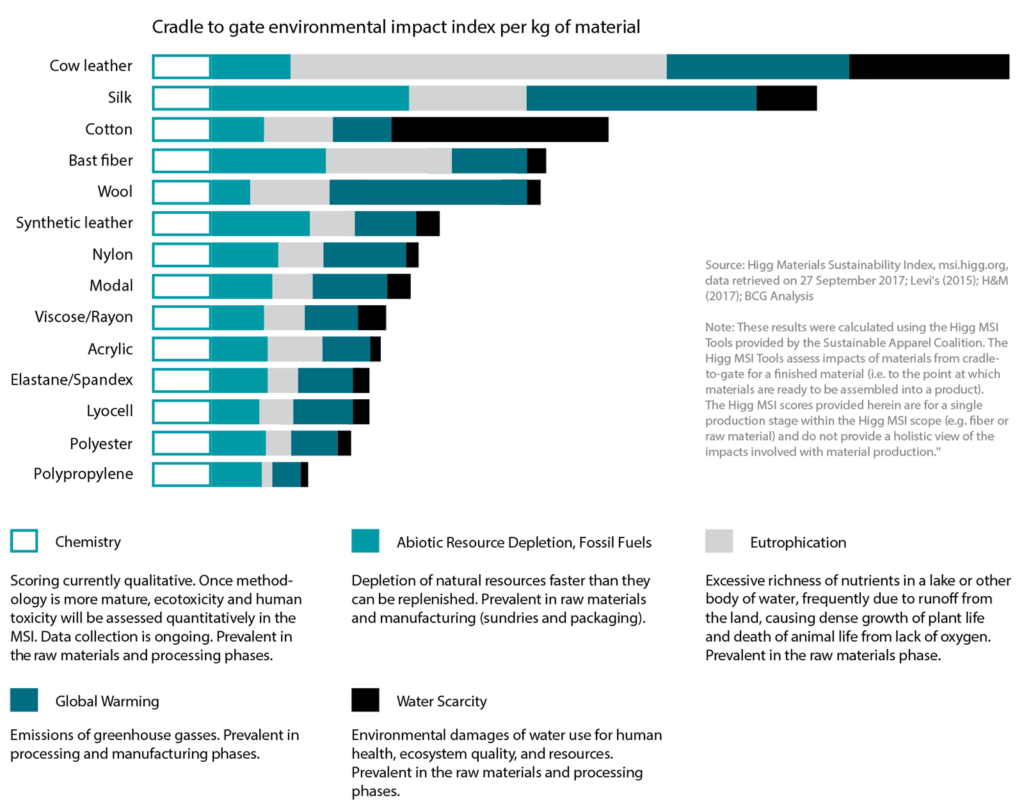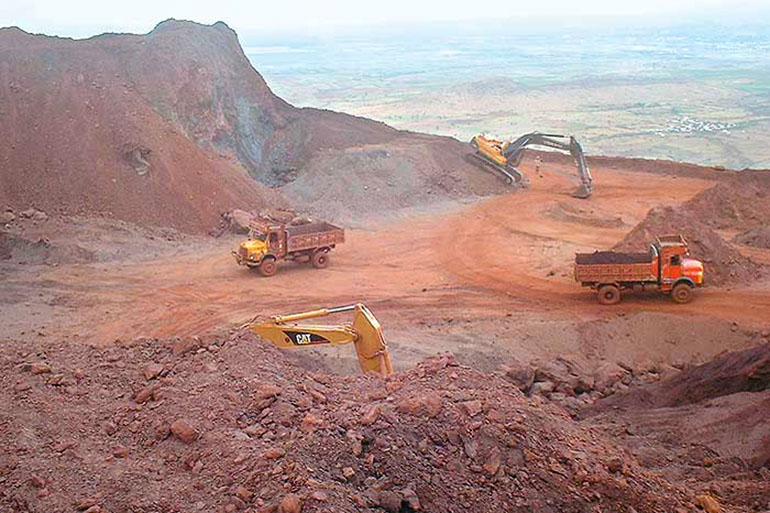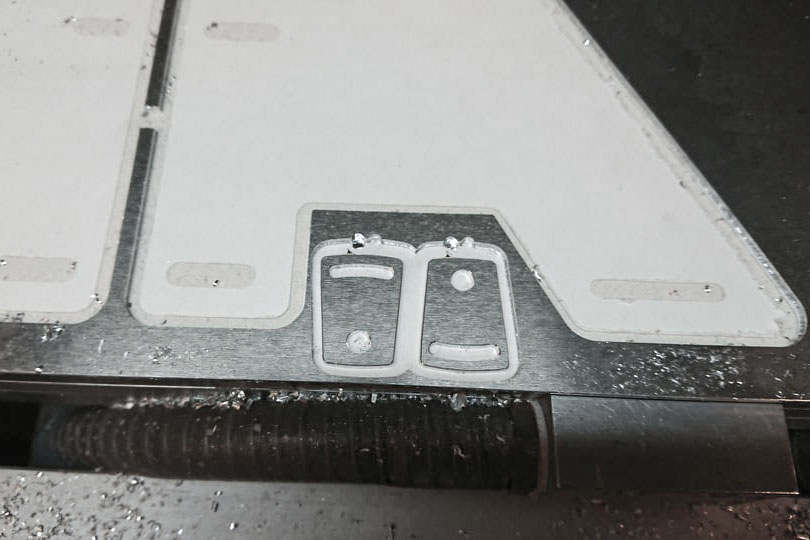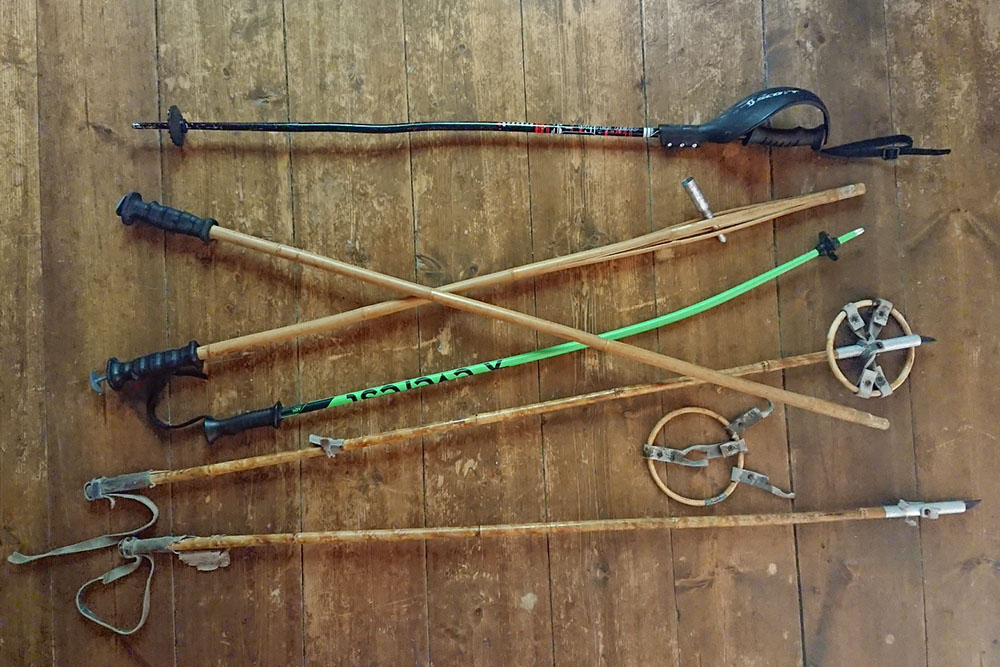Hold on! Here comes a long post, but if you care about the climate, you should read the whole thing. I have explained earlier why I started making bamboo ski poles. It is simply the most eco-friendly and durable ski pole material available, and bamboo creates itself solely with the help of sun, soil and rain. In the best of worlds, all parts of the ski pole would be made of sustainably produced natural materials, which eventually can be biodegraded to leave no trace. So why polypropylene and not leather for the ski pole straps? Why elastomer and not natural rubber for the grips?
My goal is to make as environmentally friendly and climate-smart ski poles as possible. The materials must be produced, manufactured and “retired” as green as possible, without toxins and as long-lived as possible. All parts should preferably fit into a functioning life cycle and a circular economy. I’ll use the EU waste management hierarchy to explain. The higher up on the list, the better!
- Consume less – make sure no waste is created at all
- Reuse as much as possible
- Recycle the material
- Recover the energy from the material
- Disposal – material that need this should be avoided if possible
First of all: don’t buy a new pair of poles unless you don’t really need to! Secondly: ski poles of bamboo have a very long service life, which means that fewer poles need to be consumed. I have several bamboo sticks that are almost a hundred years old that testify to that; my great-grandfather’s bamboo poles. And should the bamboo crack, or if you grow too tall for your poles, it is easy to replace the Tonkin cane. In other words, bamboo ski poles are made to be reused over and over again.
But if a pair of poles is run over by a grooming machine (which I have witnessed) or are completely massacred by something else, you may have no other option than the bin. Then recycling the material is recommended first and secondly to recover the energy. But recycling the material requires a widespread recycling system to be energy efficient. If there is no efficient recycling system, energy recovery through incineration can be more eco-friendly. Then electricity and district heating are extracted, and the waste becomes 99.9 percent substances normally present in the air: nitrogen, water vapor, carbon dioxide and oxygen. Just because a material is “recyclable” doesn’t automatically mean that it is an eco-friendly alternative. Sometimes recovering the energy has a lower environmental impact than recycling the material.
I will try to explain why I have chosen the materials for my ski poles, from top to tip.
Grips of thermoplastic elastomer (TPE–SEBS)
… is an oil-based (unfortunately) styrene-ethylene-butylene-styrene material similar to rubber. TPE has a require less energy and fewer resource steps, which results in a lower environmental impact than other rubber. It’s a durable material with a long service life and can be reused over and over again as long as the grips are intact.
TPE can be recycled as material, but there is no widespread recycling system for the consumer. Therefore, you will most likely have to sort it as household waste or as combustible waste at your local waste transfer station (material recycling facility). In both cases, energy is recovered by incineration into hydrocarbons and converted to district heating or electricity. The material is classified as harmless to the environment and doesn’t leak toxins during use or incineration.
The grips are pressed on with the help of a little linseed oil soap and water.
Option: I’m simply tied to the grips on the market. There are no grips made of vulcanized natural rubber (latex), and I’m not sure that these would be better for the environment. Natural rubber often doesn’t have a very long service life, drying and cracking or becoming sticky after a while. Tehnomat, the manufacturer of my grips, has started testing three new materials for bioplastic-based grips: recycled leather, recycled paper, and hemp. To be continued!
Cork grip + thermoplastic elastomer (TPE-SEBS)
Consists of 50 percent cork mixed with 50 percent TPE-SEBS. As it’s a mixed material, it’s difficult to recycle as material, but it’s excellent to recover as energy. Therefore, sort the cork grips in regular household waste or as combustible at the waste transfer station (both are incinerated). The material is classified as harmless and doesn’t leak toxins during use or incineration. Theoretically, the cork grips should insulate slightly better against the cold, and the weight is ten grams less per grip.

Ski pole straps made of recycled polypropylene (PP)
Woven ribbons, so-called “webbing”, made from recycled polypropylene from Chinese Weaver Textile. They are extremely durable, do not absorb water, and are excellent for recycling once their service life is over (which shouldn’t be during our lifetime). Unfortunately, there is no PP recycling system for the average consumer. Polypropylene is used for cable ties and therefore the pole straps could theoretically be sorted as plastic in FTI’s recycling stations to become new plastic. But FTI’s stations are purely for recycling packaging and not the content inside. Therefore, the pole straps must be sorted as regular household waste or as combustible at the waste transfer station. For example, the kids’ Lego cardboard box can be sorted as “paper packaging” at FTI’s stations, but the Lego itself must be sorted as combustible. Polypropylene is classified as a harmless plastic and does not leak toxins during use or incineration.
The pole straps are attached with a stainless steel screw and adjusted with a buckle/tightener made of leftover scrap aluminum sheets (more about aluminum further down).
Option: Why not leather, hemp, cotton, bast fibers, lyocell or any other organic material? Well, because of all these materials, polypropylene has the least environmental impact and climate footprint when it comes to global warming, water scarcity, eutrophication and abiotic resource depletion (depletion of non-living and finite resources such as fossil fuels, minerals, clay, etc.). Leather is unfortunately the worst of all materials, according to the survey Pulse of the Fashion Industry 2017.
Bamboo
Bamboo is an extremely fast-growing grass species with the tensile strength of steel and higher compressive strength than concrete, but still flexible and light weight. Calcutta bamboo, that I use, is ready for ski pole making after only one and a half to two years. And when harvested, more root shoots are stimulated to grow and make the bamboo colony even larger. As mentioned above, bamboo only needs sun, soil and rain, and binds carbon dioxide from the air faster and more efficiently than almost any other plant (read more here). Bamboo is both sustainable and durable (see here). Should the bamboo stick break, you can throw it in the woodstove or sort it as combustible.

Baskets of low-density polyethylene (PE-LD)
Polyethylene is usually made from natural gas (unfortunately) and is the world’s most common plastic. It’s a very durable material with a long service life and can be recycled repeatedly. But the same applies to polyethylene as to polypropylene, it could be sorted at FTI’s recycling stations if it was a package but must instead be sorted as combustible. Slovenian Tehnomat, which makes my baskets, uses low-density polyethylene (PE-LD) because it can withstand cold better. Polyethylene is classified as harmless and does not leak toxins during use or incineration. Bio-based polyethylene from ethanol has emerged lately, so hopefully, it will only be a matter of time before it reaches the ski pole market.
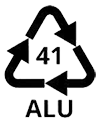
Aluminum ferrules
At the bottom of the ski pole is a ferrule of 6026-aluminum and then a tip made of two materials: an intermediate bracket of zinc-plated steel and at the very tip a tungsten carbide tip. The ferrules are lathe-turned from recycled aluminum rods by Gnosjö Automatsvarvning (which has been nominated for this year’s climate award for their efforts with its own solar park, lead-free alloys, vegetable oils instead of mineral oils, etc.).
Aluminum is the most common metal in the surface of the earth, but extracting virgin aluminum is a dirty, energy-intensive and environmentally damaging story, often in open pits. The energy needed for virgin aluminum production is extremely high, with high greenhouse gas emissions that leads to global warming. And in addition, the waste from virgin production, called “red clay”, often causes major problems with dust spreading and leakage of various heavy metals to sensitive watercourses. These are important reasons to why regular aluminum ski poles should be avoided.
Recycled aluminum saves 95 percent of the energy otherwise required to produce virgin aluminum from bauxite. Aluminum is cheap and ideal for recycling. If you manage to separate the ferrule and tip before recycling as metal at the waste transfer station, it’s a plus. Otherwise, it works fine to throw the entire ferrule into the metal container.
The ferrules are attached with hot melt adhesive consisting of EVA and resin (no solvents needed), and are classified as harmless by the Swedish Society for Nature Conservation.
/Fabian Rimfors
Updated September 23, 2023
